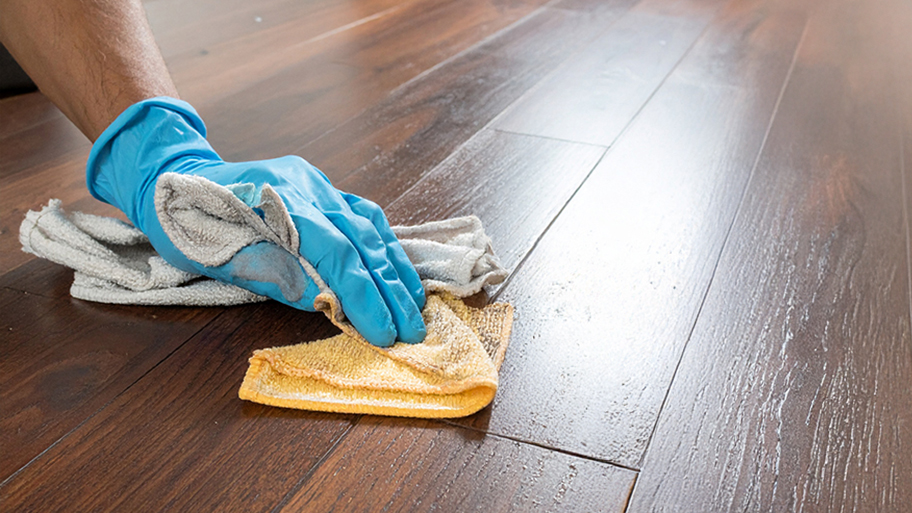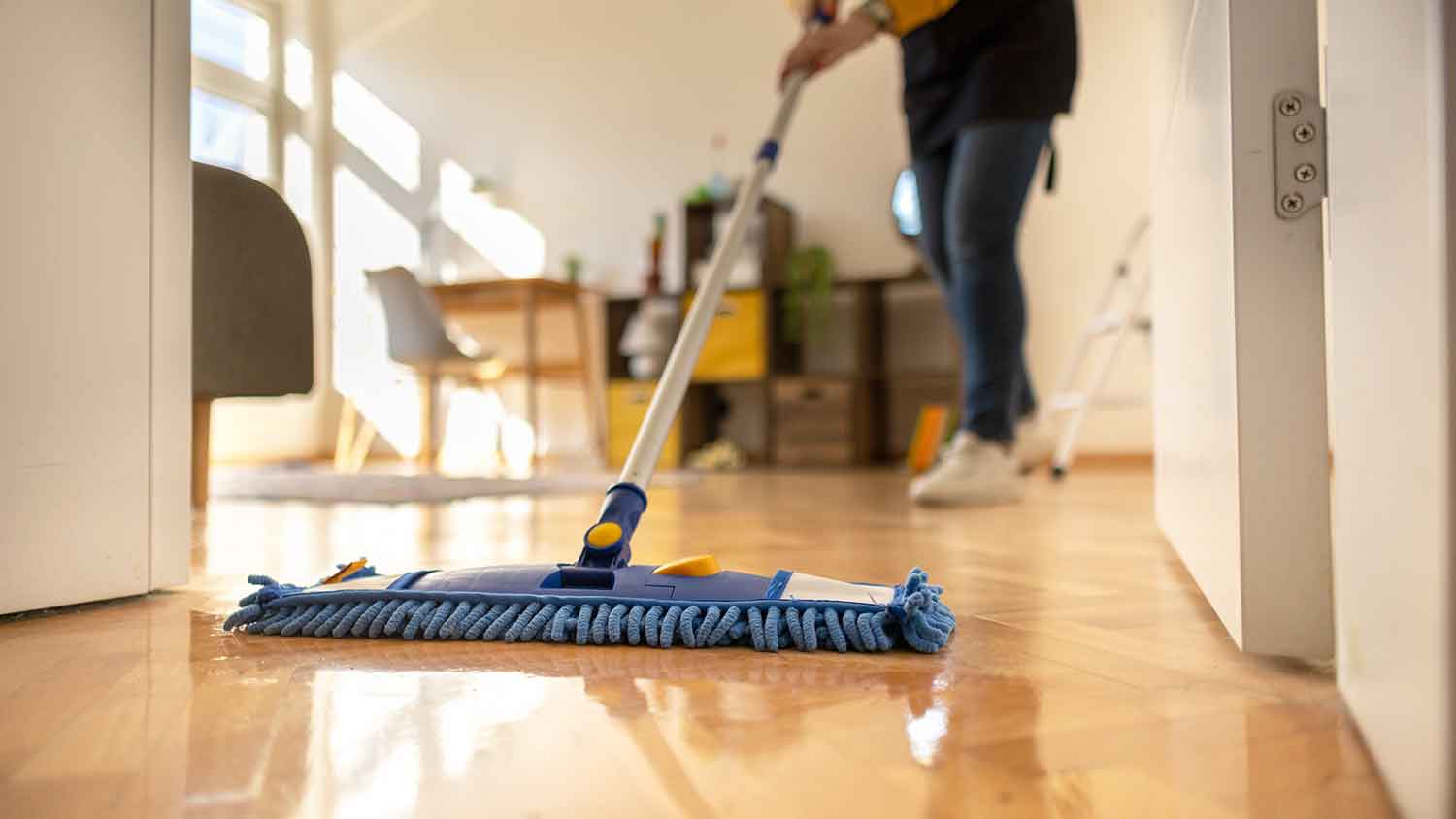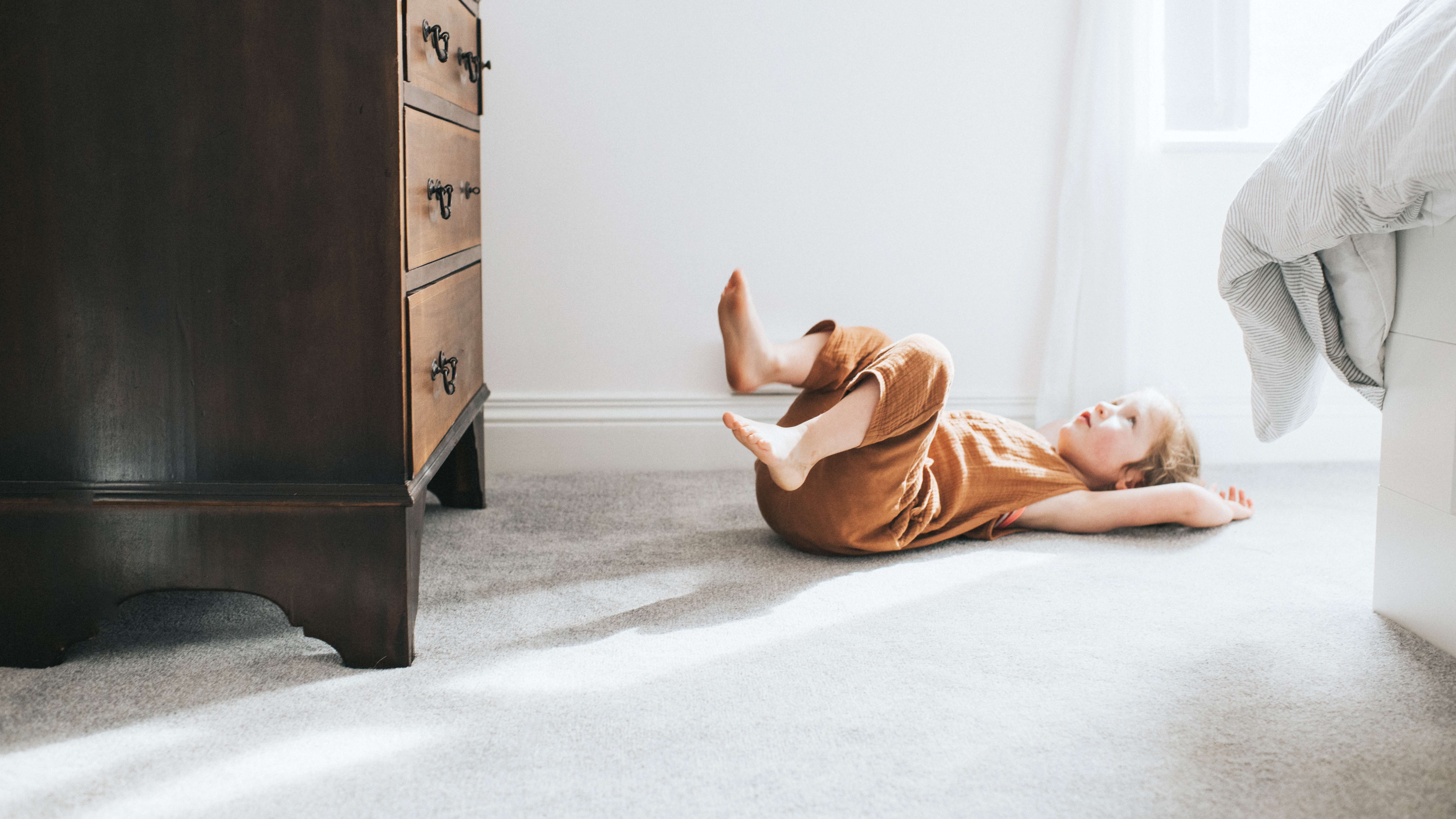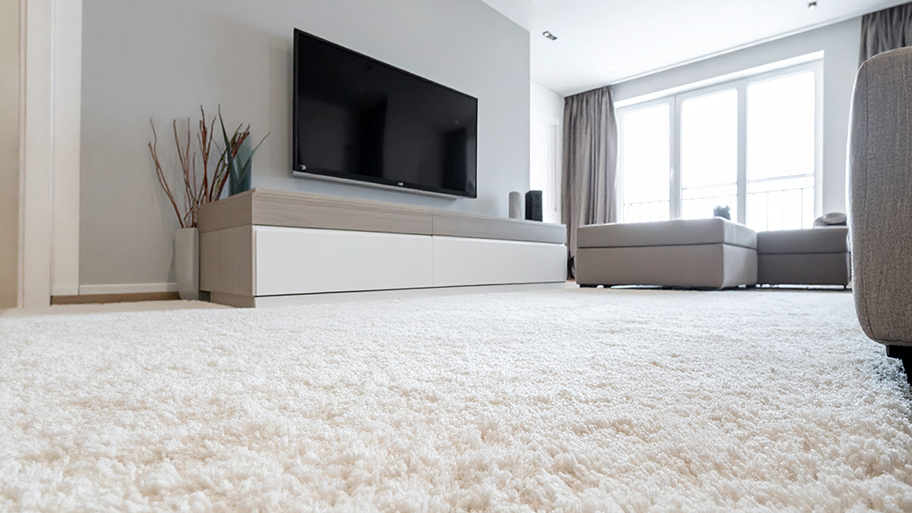
Here’s how to get paint off of wood floors, no matter what type of paint it is or just how much of it you need to remove.
Mop it up for a fresher space


The best time to mop is when there’s no foot traffic, so plan around your daily routine.
Hardworking kitchens may need daily mopping.
Weather often influences when you need to clean your floors.
Use the right cleaner for your floor material to prevent damage and ensure effective cleaning.
Nothing makes a home feel more fresh and comfortable than clean floors. But how often should you mop your floors to prevent them from feeling stale and dirty? Whether you have tile, hardwood, or laminate, the frequency of mopping varies depending on foot traffic, pets, and even the type of flooring. Here, we share the best practices for mopping to keep your floors spotless while avoiding over-cleaning or neglect.
| Location | When to Mop |
|---|---|
| Kitchen | After meals |
| Dining area | After meals |
| Entryway/Mudroom | Bi-weekly maintenance; After messy weather |
| Bathroom | Weekly |
| All spaces | After gatherings |
The best mopping times depend on your household's daily routine and level of activity. For many, early morning or late evening works best, as these are typically quieter times with less foot traffic, allowing clean floors to dry.
One of the most effective times to clean your floors is after meals, particularly in high-traffic areas like kitchens and dining areas. Spills, crumbs, and grease can dirty floors during food prep and dining. A quick sweep and mop after dinner when the kitchen is closed is a highly effective way to keep your home tidy and give you control over its cleanliness.
A good time to mop busy entryways and mudrooms is bi-weekly and after weather events, like snow and rain, when dirty boots and shoes enter the home. When it comes to bathrooms, mopping weekly is highly recommended to keep the space hygienic.
Another excellent time to schedule a floor cleaning for active homes is after a gathering, like a jam-packed play date for your kids.

Mopping frequency depends most highly on the floor material.
Weekly dry mopping to remove dust and pet hair is highly recommended, and monthly wet mopping using the appropriate cleaner made specifically for wood floors is also a good practice. Remember, water can damage wood. Cleaners made for wood dry quickly, reducing the risk. For high-traffic wood floors, spot clean between wet moppings.
Floors like these are often in hardworking spaces like kitchens and bathrooms so that they can handle more frequent mopping—ideally once a week in bathrooms, and for kitchens more often, usually a light clean up after meals. Remember, grease and spills accumulate more quickly in kitchens.
As with tile, linoleum can handle more frequent cleaning compared to wood. However, be cautious not to use too much water. Using cleansers specifically for linoleum will reduce moisture damage, which the material is prone to over time.
Homes with kids, pets, or frequent guests will accumulate more dirt, requiring more mopping. High-traffic spots include entryways and hallways adjoining rooms used for entertaining.
Regions with lots of rain or snow mean more dirt, mud, and water get tracked into homes. Mopping more often, particularly after a weather event, will help keep floors clean and prevent stains or damage. The same is true during allergy season or for homes with pets. Mopping more often reduces dust, pet dander, and pollen buildup.

Imagine coming home from work to sparkling clean floors without touching a mop. That's the magic of hiring a pro to do the job. The average cost for house cleaning services is around $175. Broken down by the hour, you can expect to pay $50 per hour.
Let's face it: Deep cleaning your floors is a chore. While the light mopping associated with routine maintenance is doable for many homeowners, using improper techniques for thorough cleaning can damage floors.
Your best bet is to hire a professional house cleaning service to deep clean your floors and your home at least a few times every season. Remember, when you work with a trained pro who owns the right equipment, you can extend the life of your flooring, protecting the investment you made in your abode.
From average costs to expert advice, get all the answers you need to get your job done.

Here’s how to get paint off of wood floors, no matter what type of paint it is or just how much of it you need to remove.

Wish your carpet would dry faster after cleaning? Here’s how to dry carpet after cleaning without the mold, odor, or damage.

Steam cleaning keeps floors spotless, but not all flooring materials are compatible with steam. Use this guide to know when (and when not) to steam clean vinyl floors.

Disinfecting floors means ensuring they’re clean and that you’ve killed any harmful germs left on the surface. Learn how to disinfect hardwood floors in a few simple steps.

You could have all the ingredients to remove carpet stains in your pantry. Keep reading to learn how to make your own DIY carpet stain remover.

Keep your bathrooms and kitchens looking their best by learning how to clean floor tile grout in this complete guide.